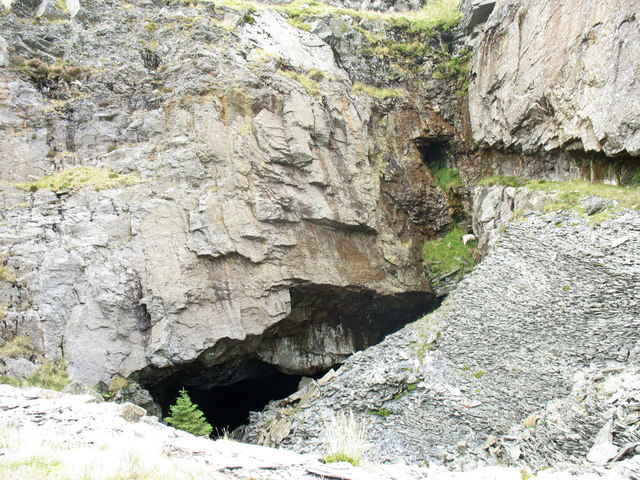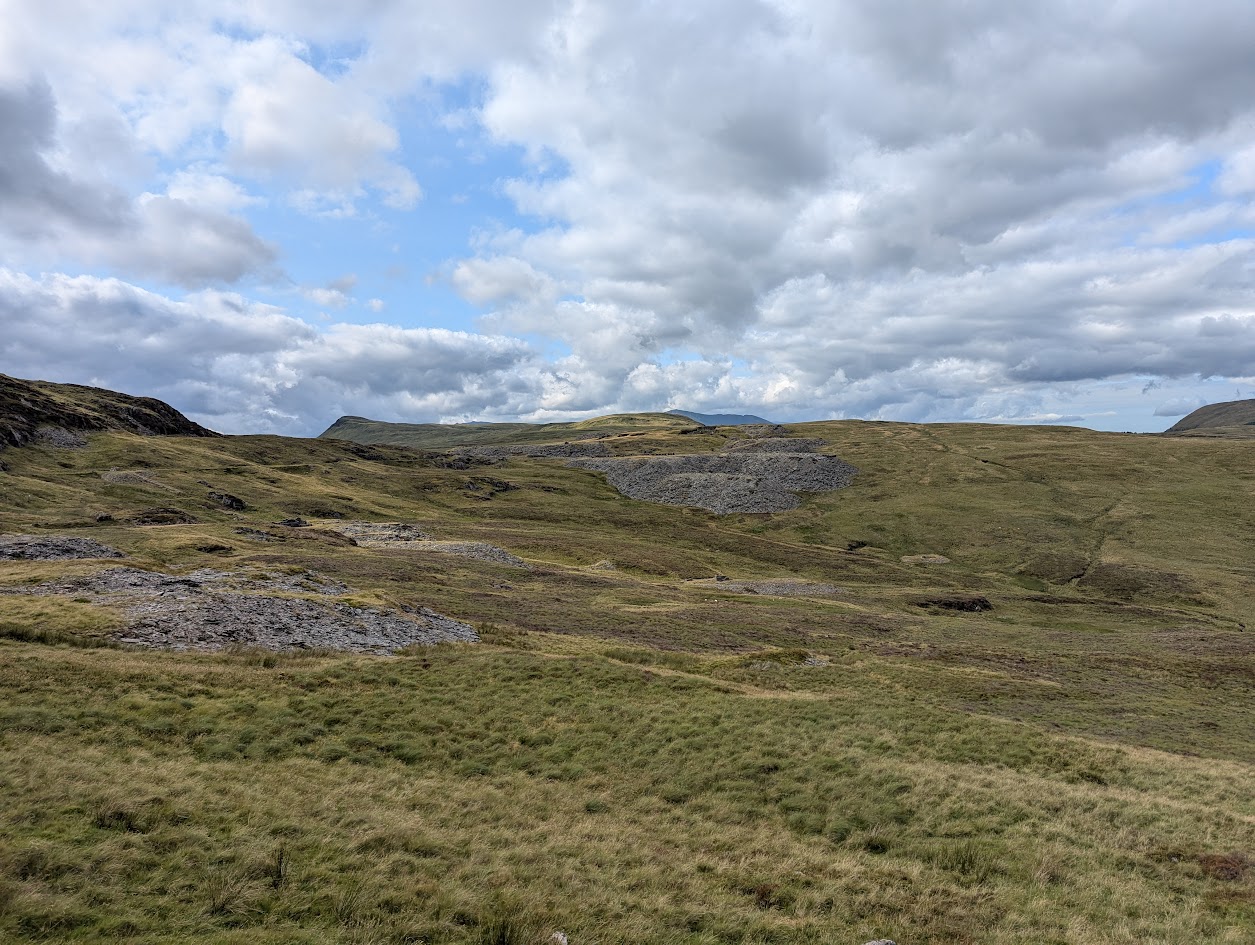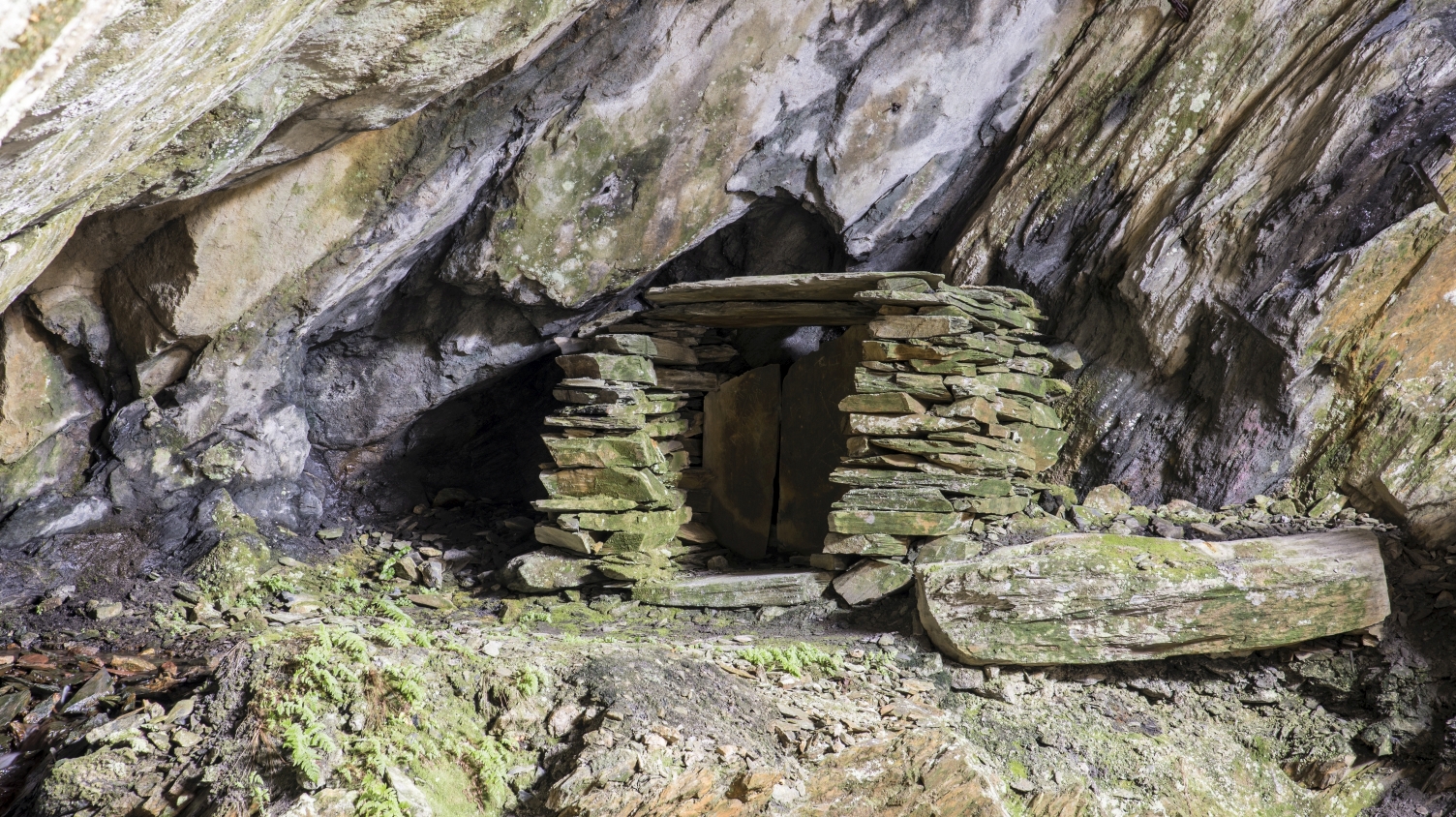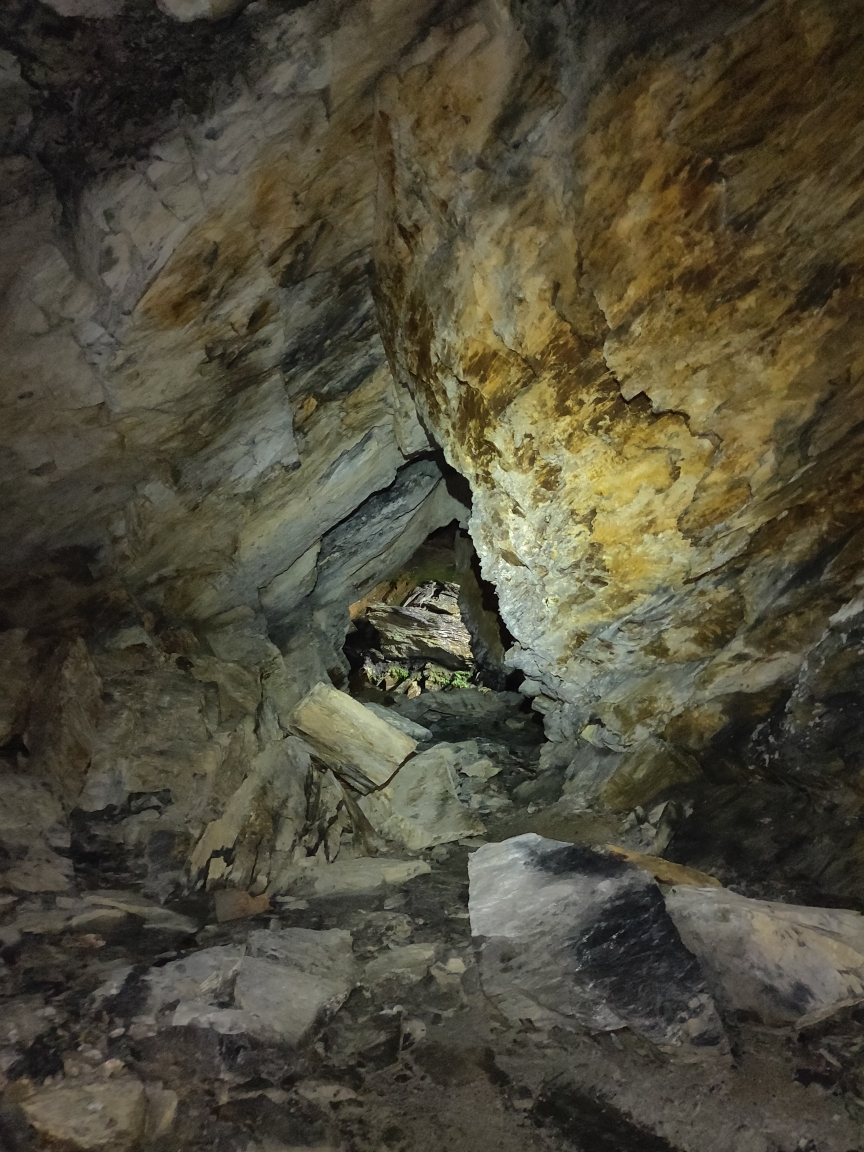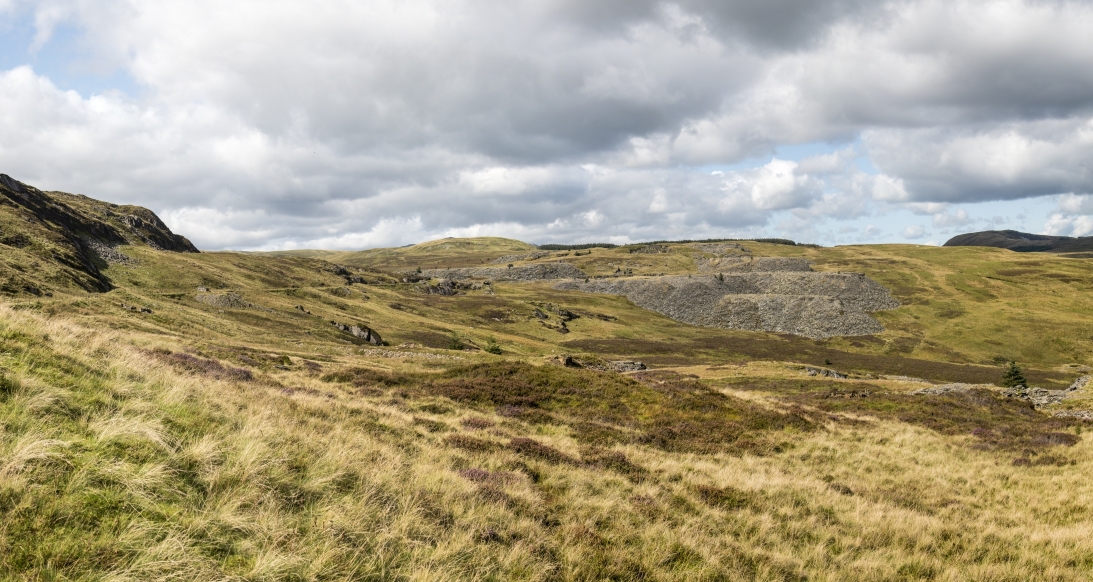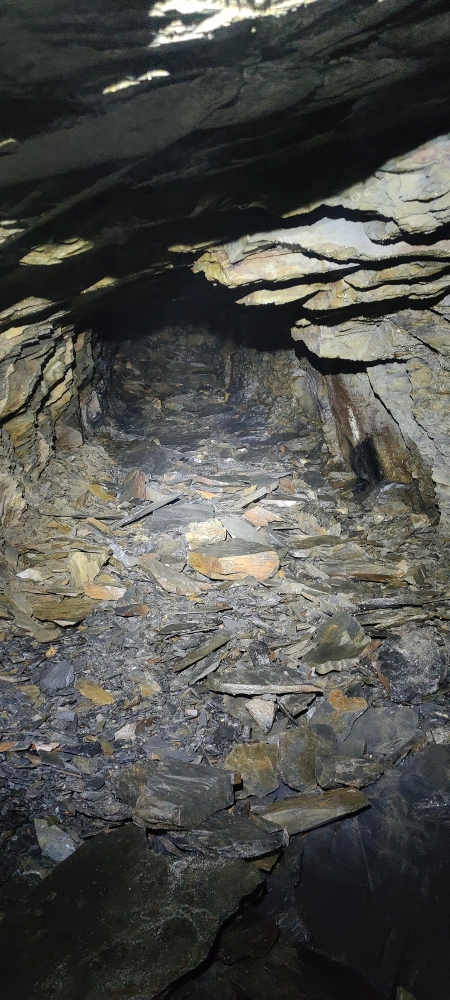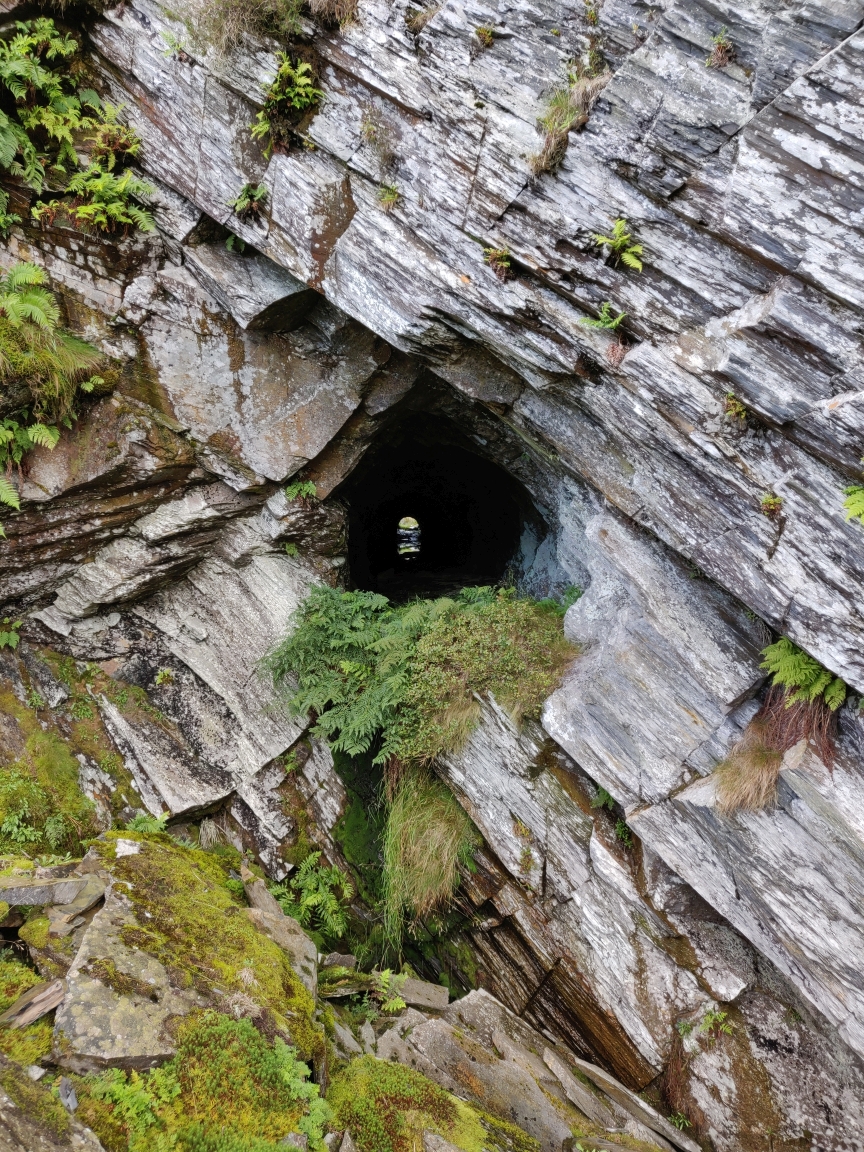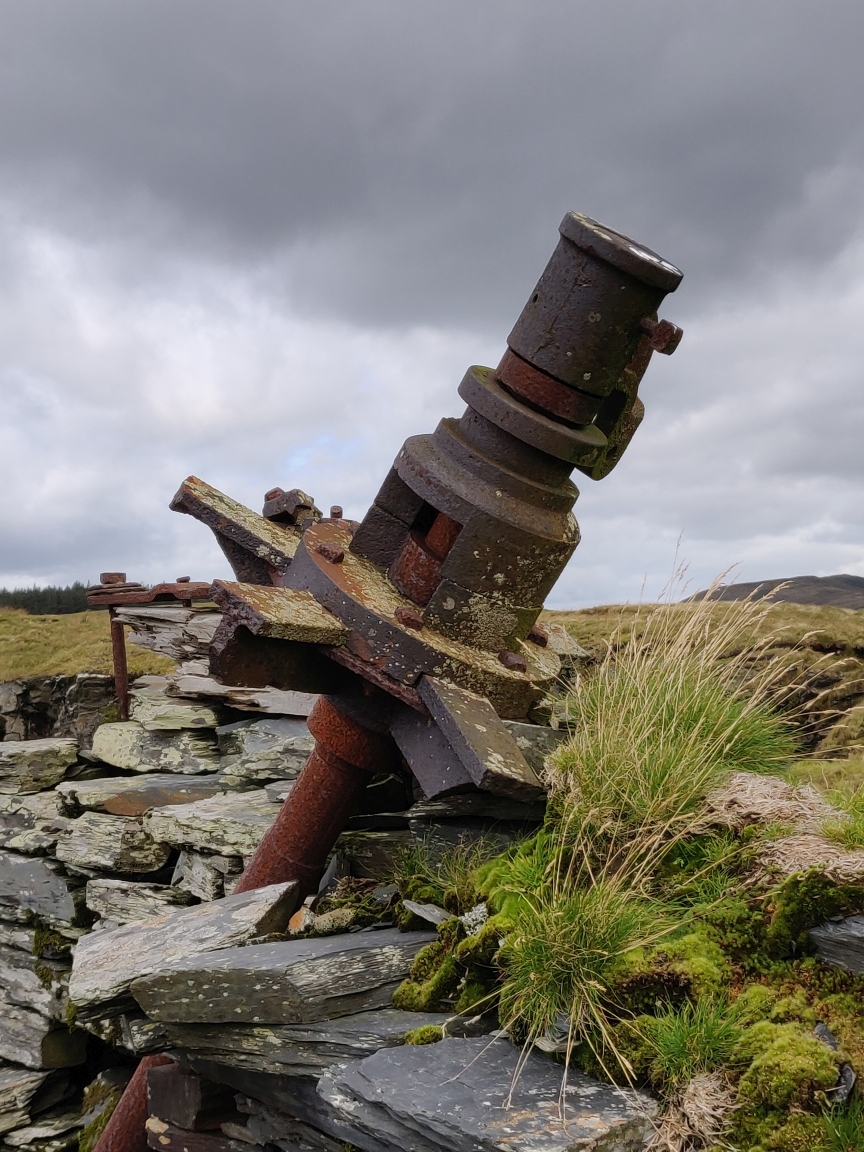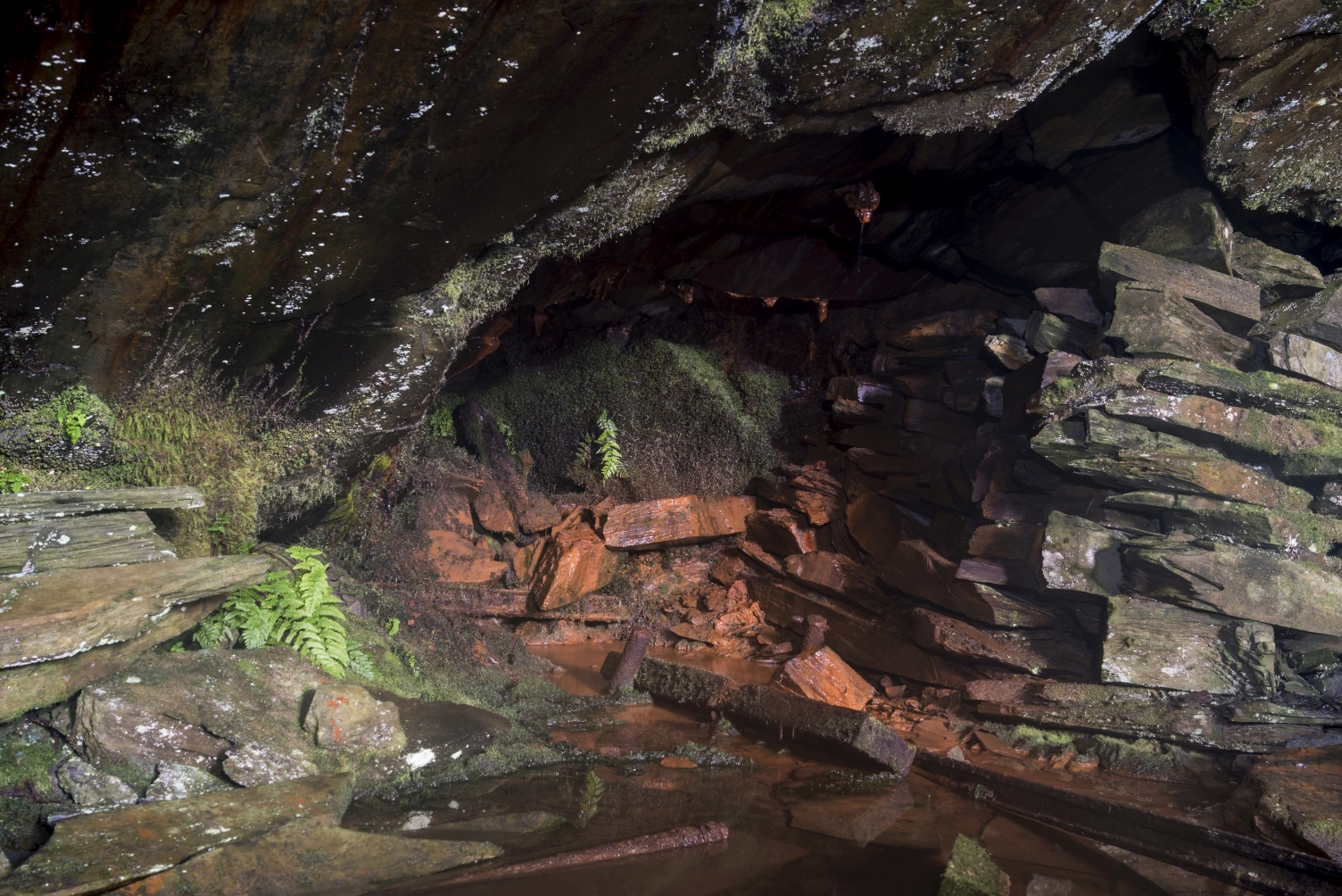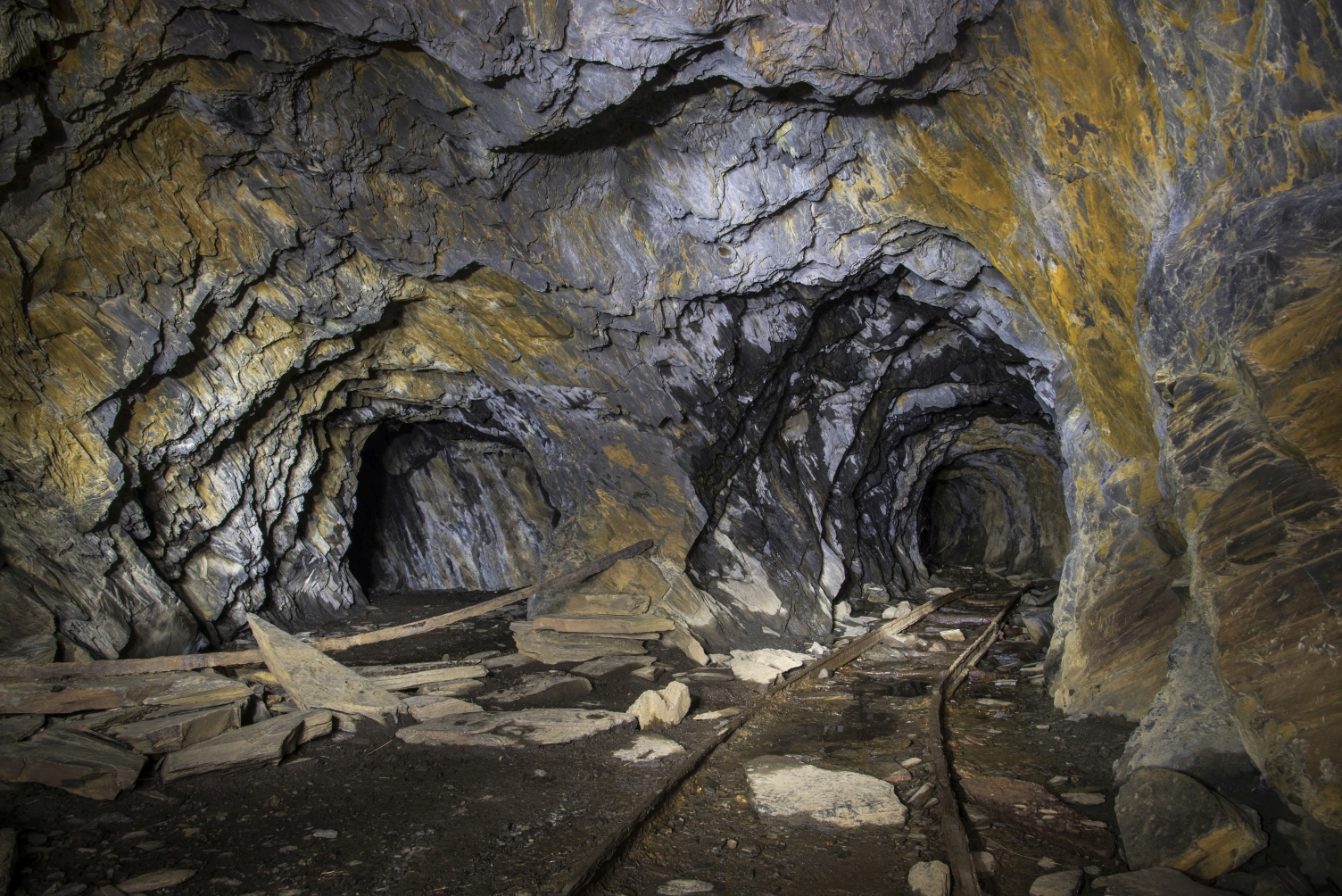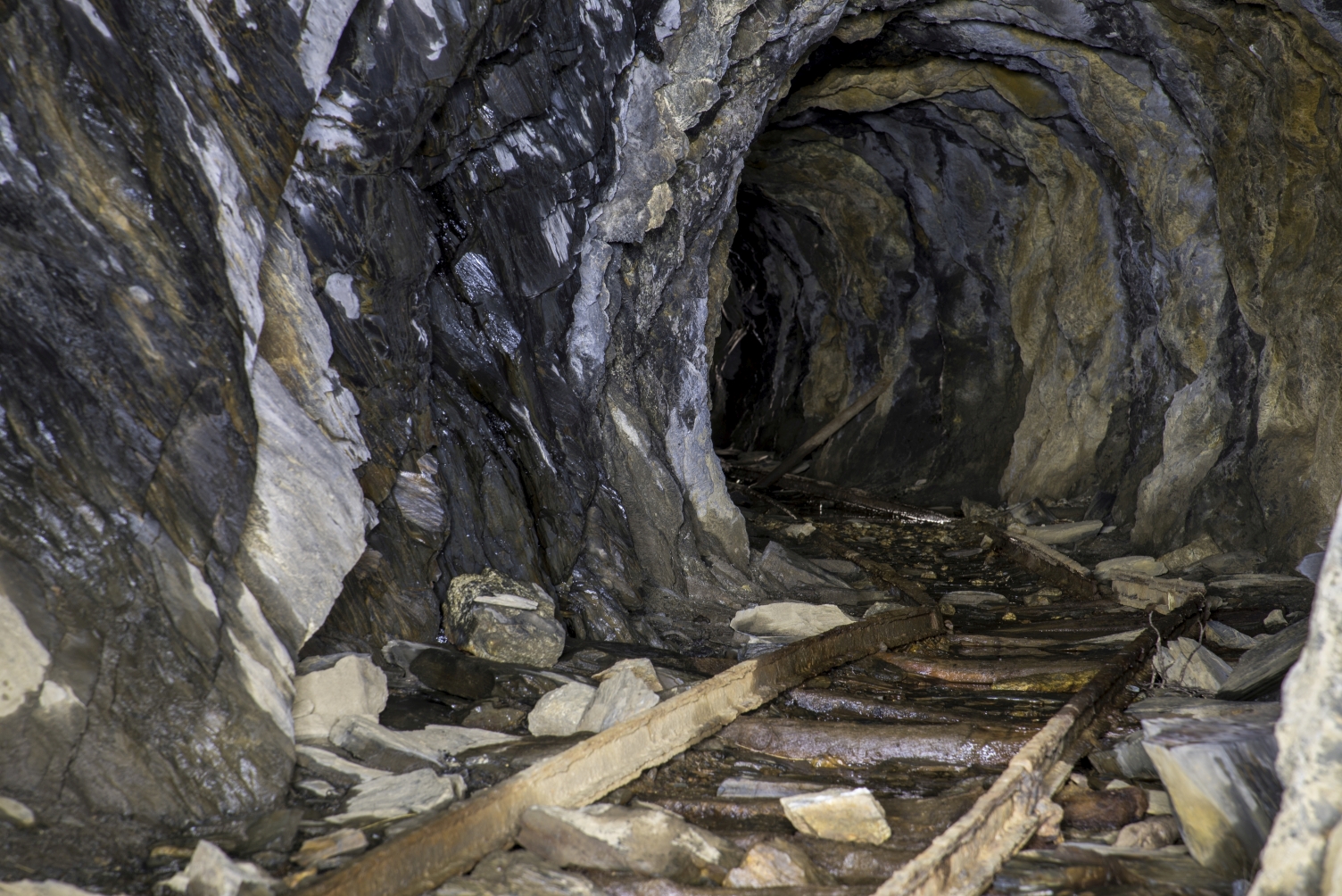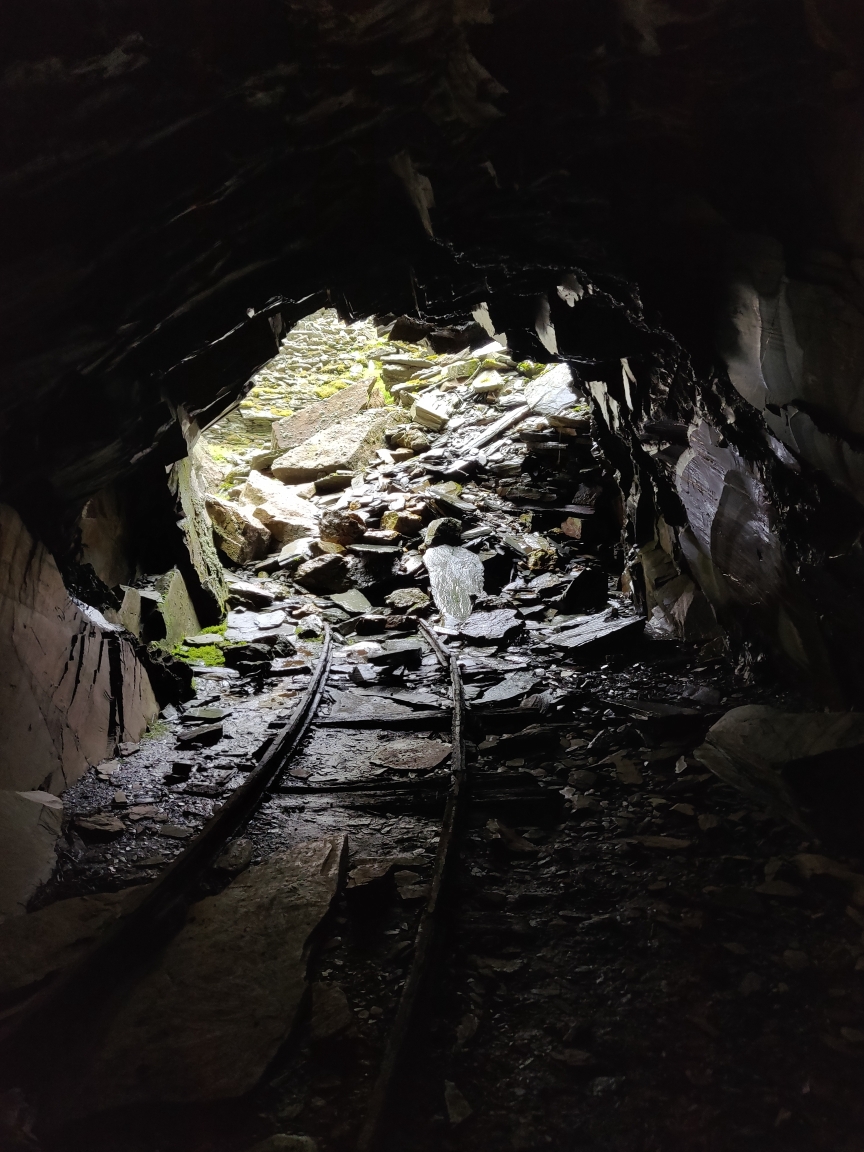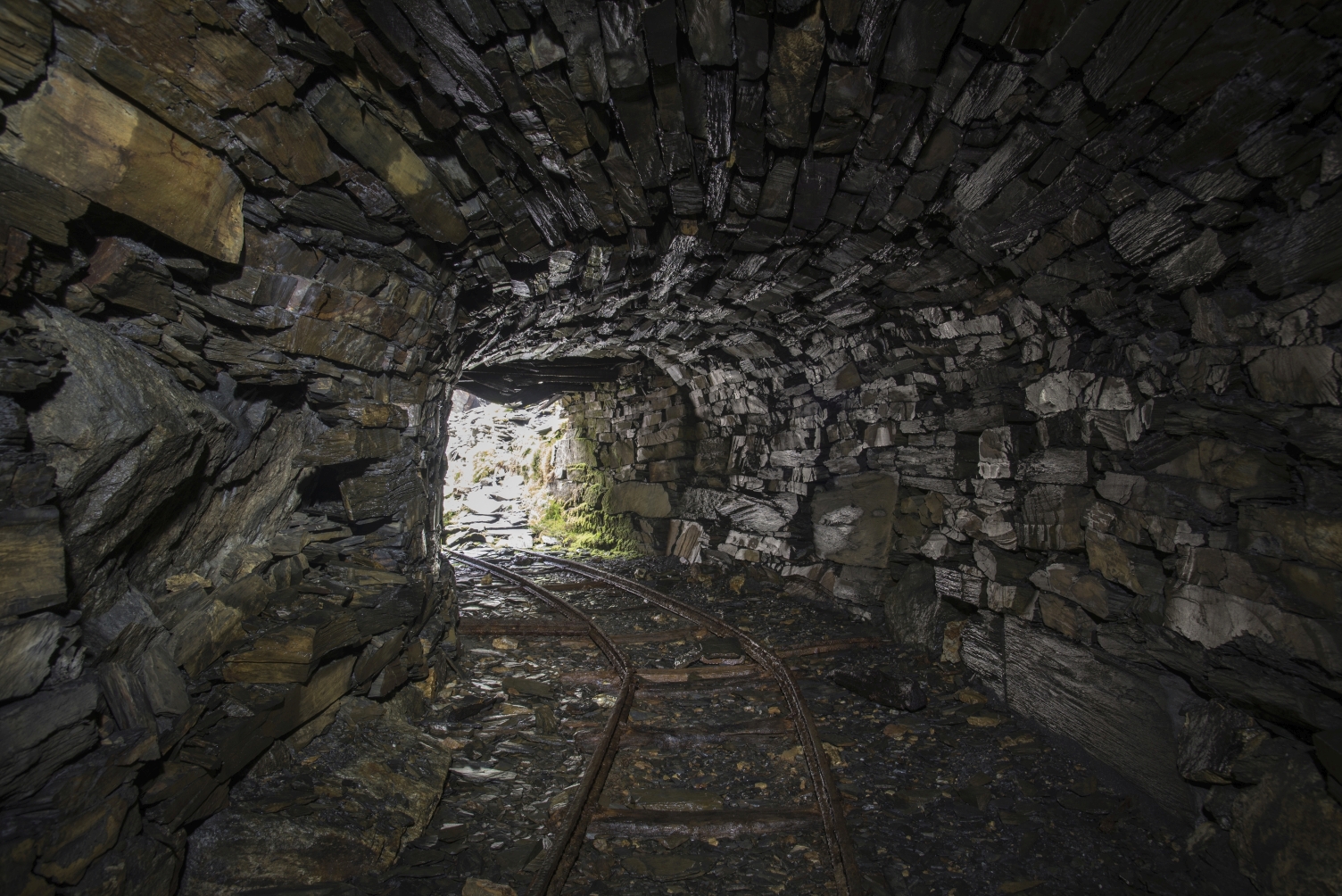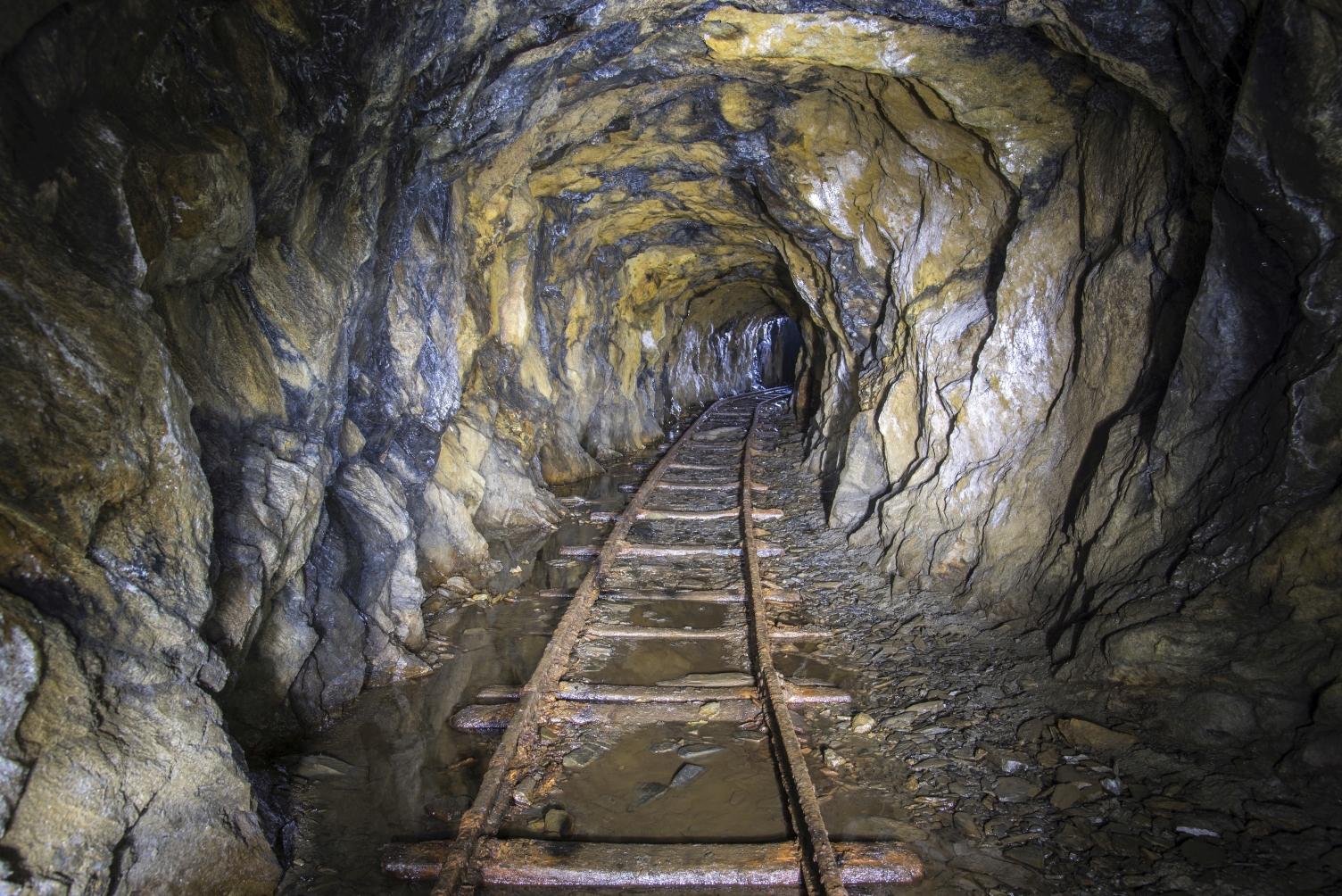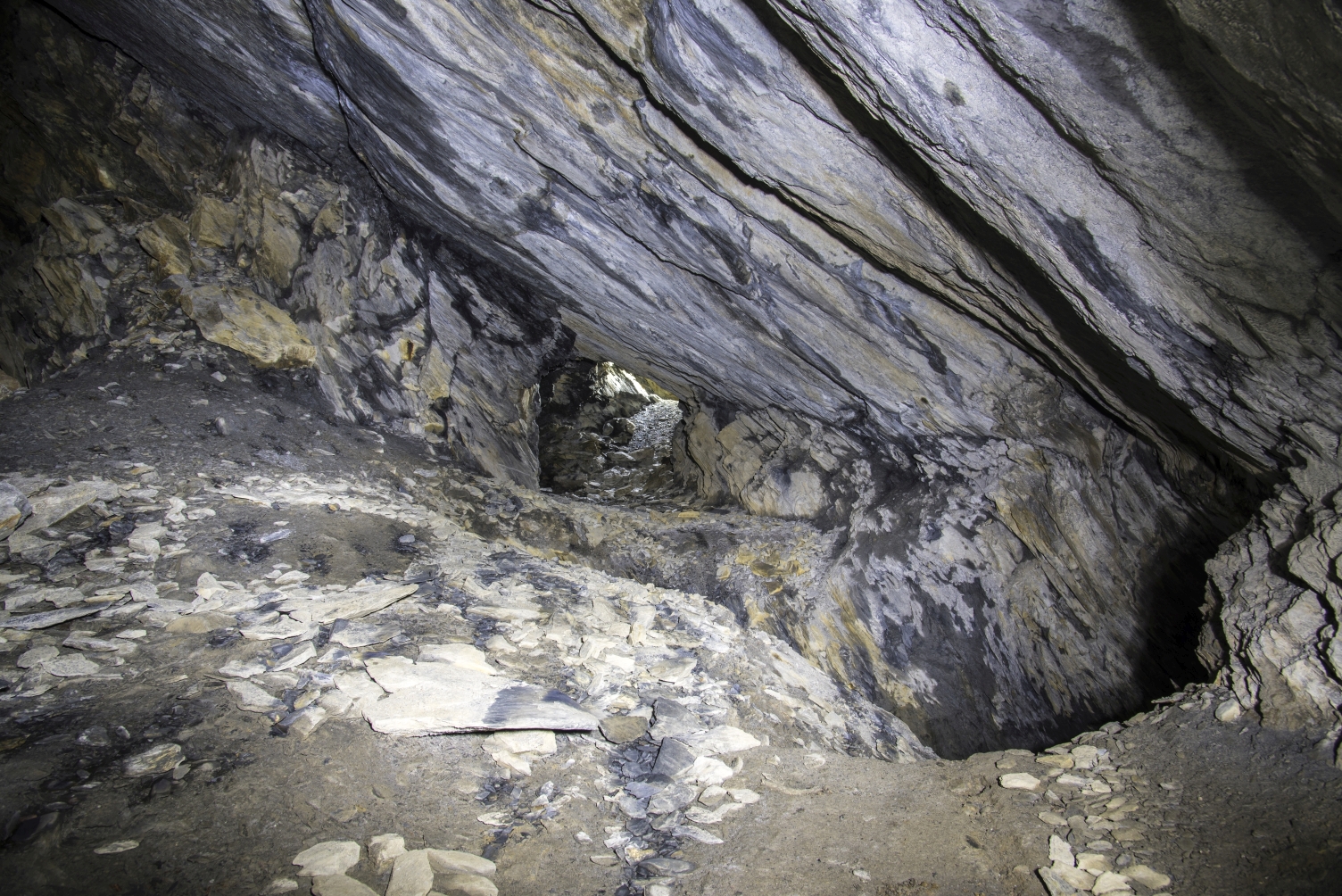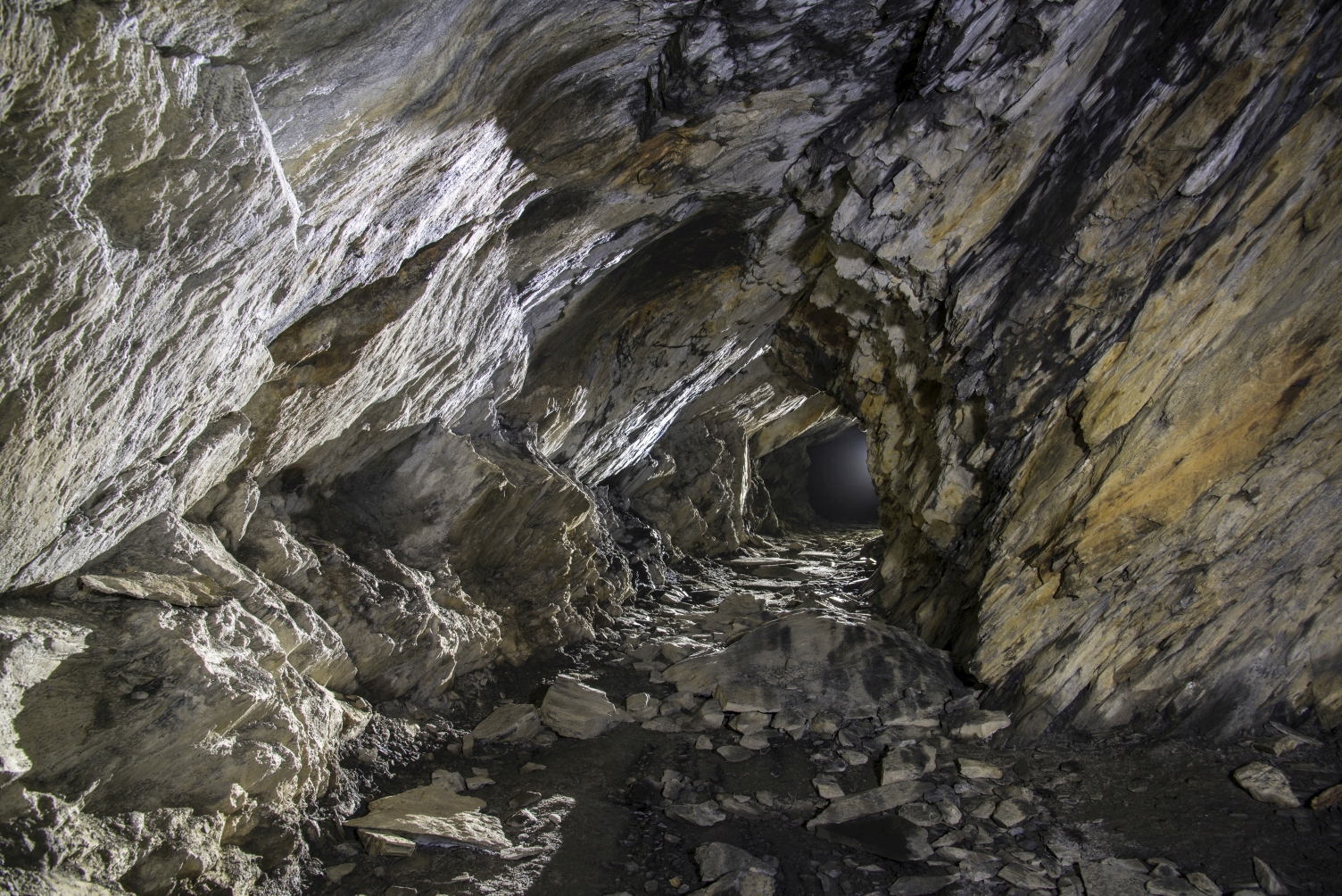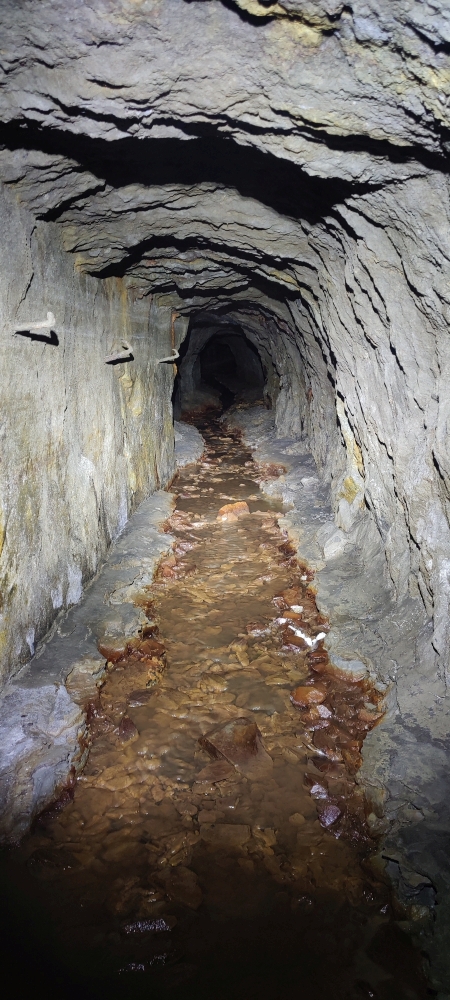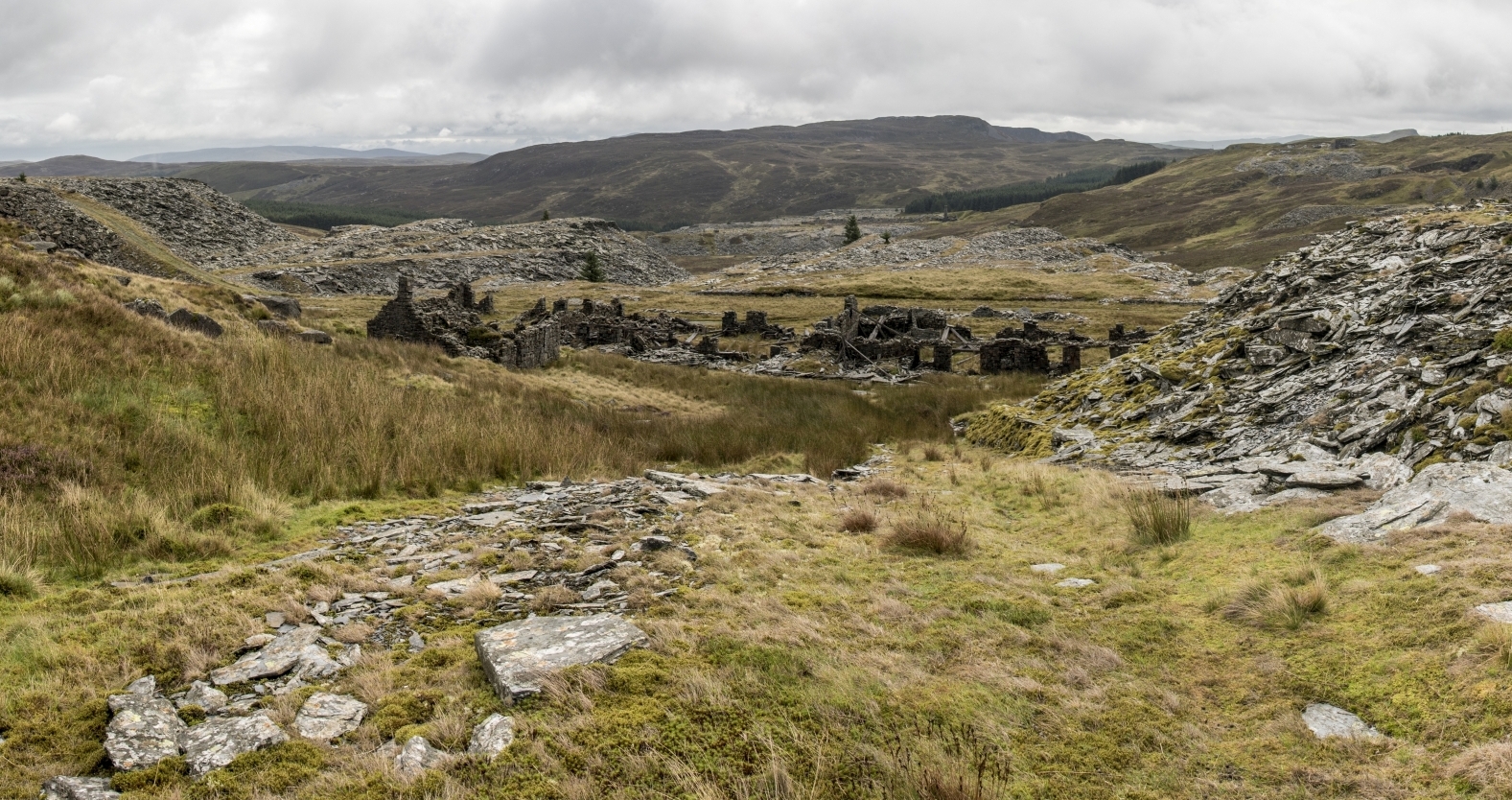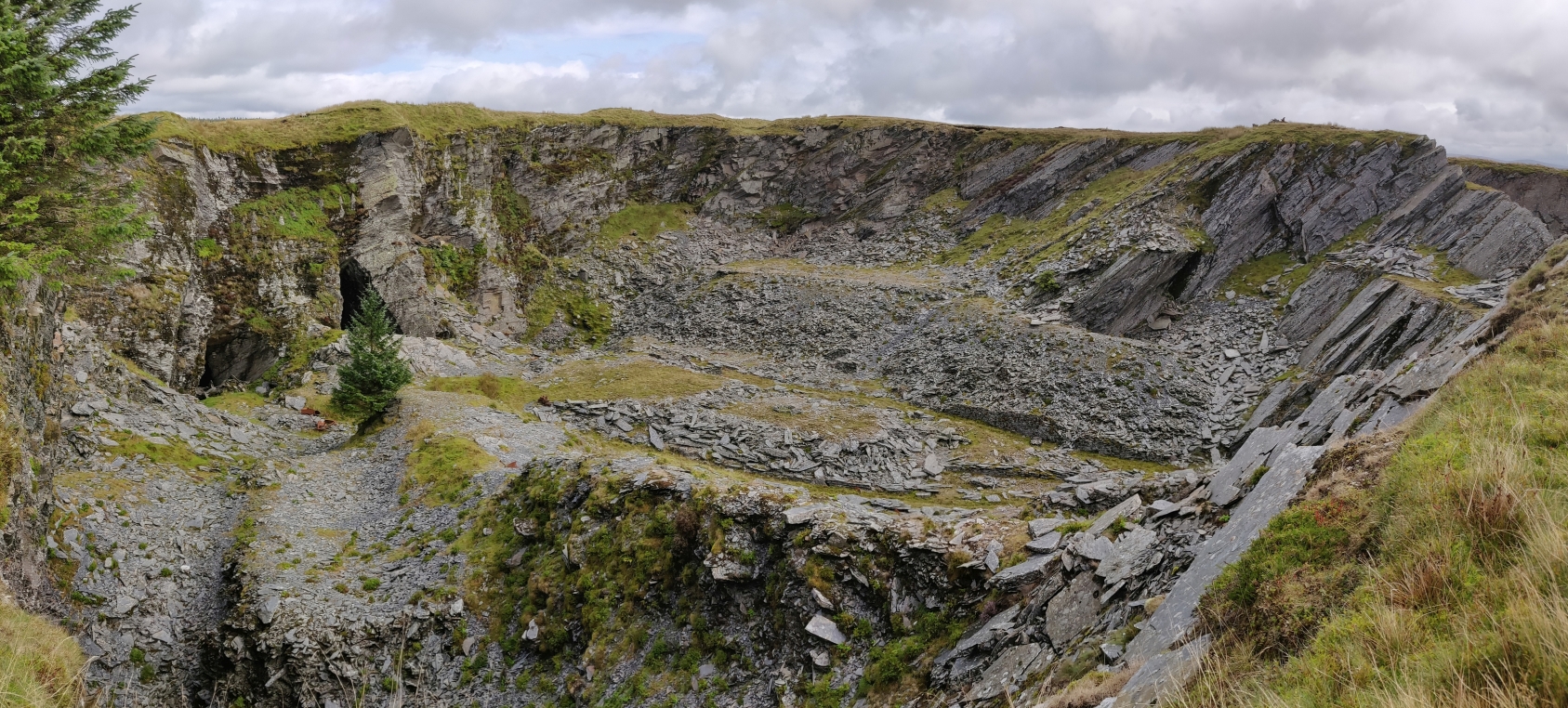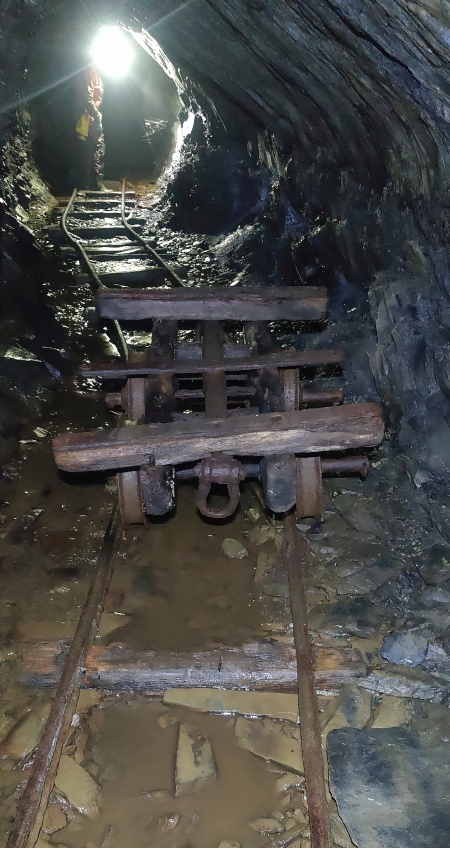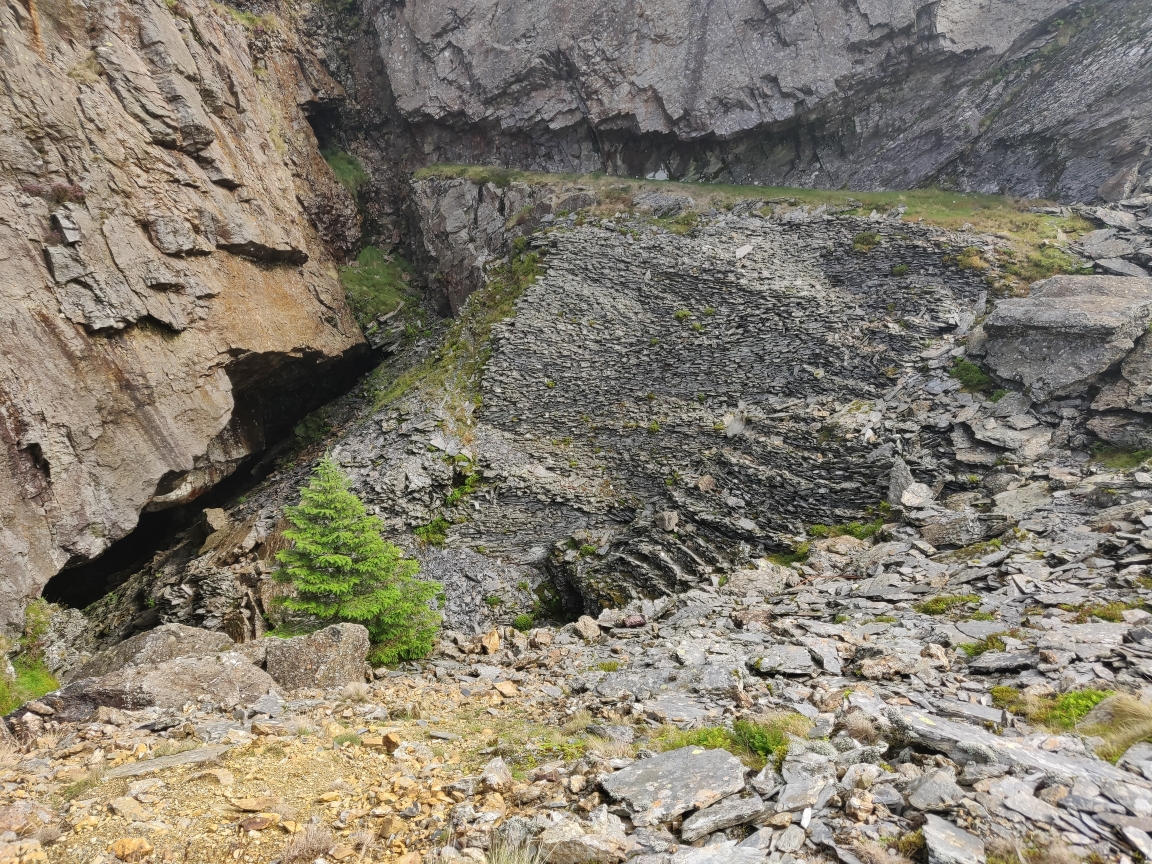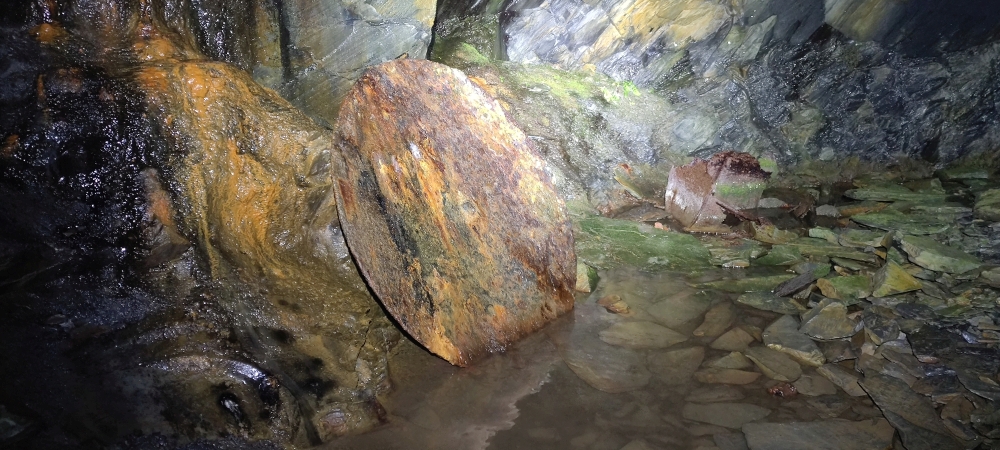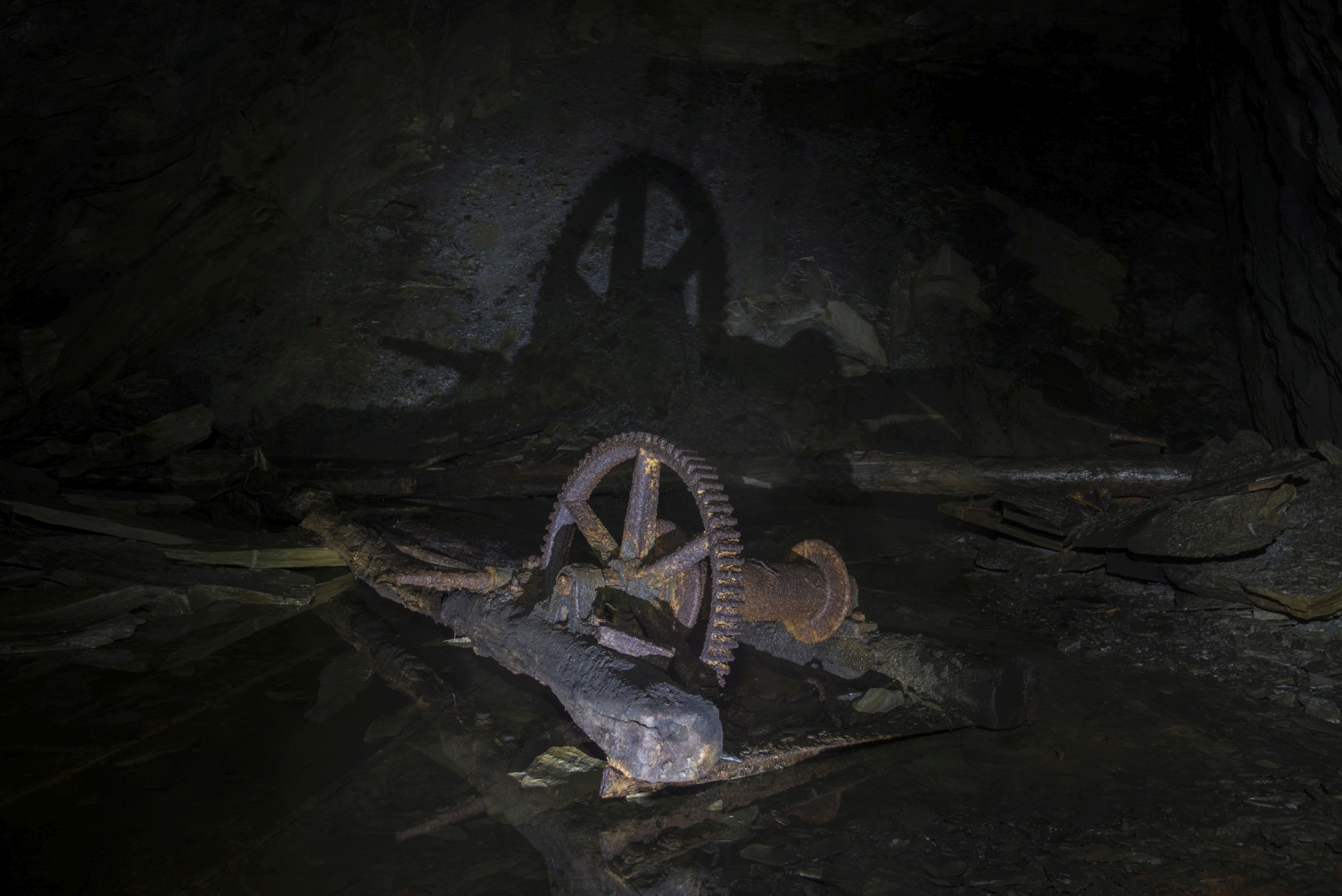Though very difficult to interpret chronologically there are still remains worth visiting. Remains of internal and external inclines, mills, barracks, drumhouses etc. can all be found though in poor condition.
Two independently worked areas known as the Front Quarry and Back Quarry were worked both at the surface and underground.
Front Quarry (the South Twll) worked what they called the Front, Red or Small Vein (this was known as the Back Vein in the Ffestiniog area). The Back Quarry (the North Twll) worked what they called the Back vein (North Vein in Ffestiniog terms).
Quarrying first noted in 1838 at the Front Quarry by the owners of Blaen-y-Cwm but working was sporadic and no output recorded. In 1864 the quarry was commercially developed at both areas with production starting around 1866 with peak output of 3861 tons in 1877. The next 15 years saw a decline in output and brief closures.
In 1908 there was a collapse, ‘the great fall’, blocking the adits from the Front Quarry. The loss of production forced the already struggling quarry into liquidation. The new owners performed limited maintenance until 1911 when two years of work to repair the damage was undertaken. The troubled quarry continued to work with numerous breaks until the 1960s. The final decade of operation was sporadic and mainly consisted of removing stock and easy pickings. During this period much of the archaeology was lost to bulldozers.
CRoW land. Easily accessible via the Rhiwbach Tramway
External Links
Publications (11)
- (1991); WMS Newsletter Issue 24 Jun; 4 pages
- (1997); WMS Newsletter Issue 37 Dec; 11 pages
- (2002); WMS Newsletter Issue 46 Apr; 23 pages
- (2004); WMS Newsletter Issue 50 Spring; 40 pages
- (2022); WMS Newsletter Issue 86 Spring; 32 pages
- Lewis, M.J.T, (2003). Blaen y Cwm and Cwt y Bugail Slate Quarries. Adit Publications. ISBN: 0952297930
- NMRS; Newsletter May/1989; pp.1
- NMRS; Newsletter Nov/1988; pp.6
- NMRS; Newsletter Sep/1988; pp.9
- NMRS; Newsletter Sep/1989; pp.4-5
- Richards, Alun John (1991); Gazeteer of the Welsh Slate Industry, A; Gwasg Carreg Gwalch 978-0863811968
